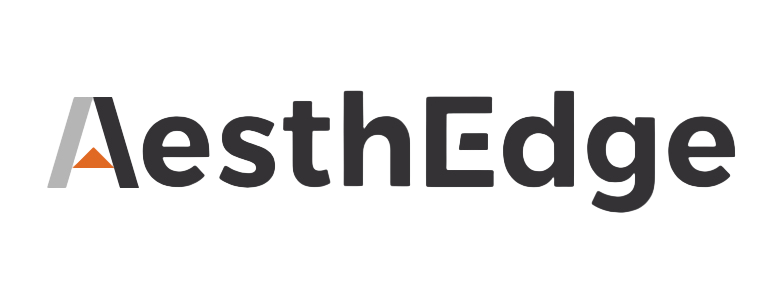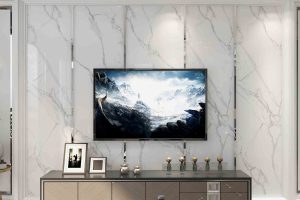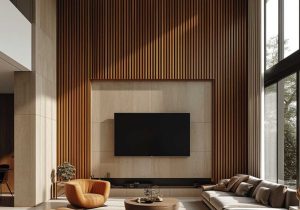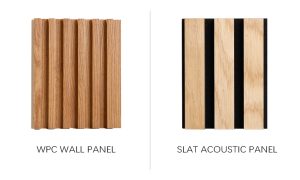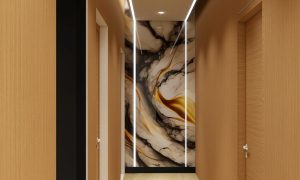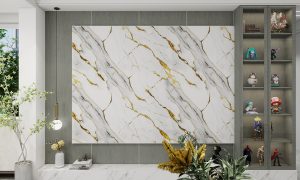
A bamboo veneer board is a type of engineered wood product that is made from bamboo. It is a sustainable and eco-friendly alternative to traditional wood veneer boards. Here’s a brief overview:
- Material: Bamboo veneer boards are typically constructed by layering thin sheets or veneers of bamboo together. These veneers are often cross-laminated, meaning the grain direction alternates with each layer. This construction enhances the strength and stability of the board.
- Adhesive: The layers of bamboo veneer are bonded together using adhesive. The type of adhesive used can vary, but eco-friendly and formaldehyde-free adhesives are often preferred to maintain the environmentally friendly nature of bamboo products.
- Sustainability: Bamboo is known for its rapid growth and sustainability. It is a grass rather than a hardwood, and certain species can grow several feet in just a few days. This makes bamboo a renewable resource that can be harvested without depleting the plant.
- Appearance: Bamboo veneer boards often showcase the natural beauty of bamboo with its distinctive grain pattern. They can be finished with different coatings to enhance the appearance and protect the surface.
- Applications: Bamboo veneer boards are used in a variety of applications, similar to traditional wood veneer boards. They can be employed in furniture making, cabinetry, interior decoration, and other woodworking projects.
- Advantages:
- Environmental Friendliness: Bamboo is a sustainable resource that grows quickly.
- Strength and Durability: Bamboo is known for its strength, and the cross-laminated construction enhances the board’s stability.
- Unique Aesthetic: The natural grain pattern of bamboo gives a unique and attractive appearance.
- Challenges:
- Cost: Bamboo veneer boards may be more expensive than some other options, but prices can vary depending on factors such as thickness, quality, and finishing.
When considering bamboo veneer boards for a project, it’s essential to inquire about the specific manufacturing process, adhesive used, and any additional finishes to ensure they meet your desired standards for sustainability and performance.

A UV sheet typically refers to a sheet or panel that has been treated with a special coating of ultraviolet (UV) curable material. UV-curable coatings are those that harden and cure quickly when exposed to ultraviolet light. These coatings are commonly used in various industries for their quick curing properties and durability. Here are some key points regarding UV sheets:
- Material: The base material of a UV sheet can vary and may include materials like plastic, acrylic, or other substrates commonly used in sheet applications.
- UV-Curable Coating: The distinguishing feature of a UV sheet is the application of a UV-curable coating on its surface. This coating is liquid when applied and hardens rapidly when exposed to ultraviolet light. The curing process is almost instant, making it efficient for industrial applications.
- Uses:
- Print and Graphics: UV sheets are often used in the printing industry. The quick curing time of the UV coating is advantageous for high-speed printing processes.
- Protection and Finishing: UV sheets can be used to add a protective layer to printed materials, photographs, or other surfaces, providing durability and resistance to wear, scratches, and fading.
- Industrial Applications: In industrial settings, UV sheets may be used for protective coverings, laminates, or specialized applications requiring a fast-curing and durable surface.
- Advantages:
- Quick Curing: UV-curable coatings cure rapidly, increasing production efficiency.
- Durability: The cured UV coating provides a durable and resistant surface.
- Enhanced Appearance: UV sheets often have a glossy finish that enhances the visual appeal of the underlying material.
- Considerations:
- Equipment: UV curing requires specific equipment, typically ultraviolet lamps, to ensure proper curing. This equipment can add to the initial setup costs.
- Cost: UV-curable coatings may be more expensive than traditional coatings, but the benefits in terms of speed and durability can offset this for certain applications.
UV sheets are versatile and find applications in various industries where rapid curing, durability, and an enhanced appearance are crucial. The specific properties and applications can vary based on the type of material used as the base and the intended purpose of the UV sheet.
Bamboo veneer boards and UV sheets serve different purposes and are used in distinct applications. Here’s a comparison between the two:
- Material: Bamboo veneer boards are made from thin sheets or veneers of bamboo that are layered and bonded together with adhesive. Bamboo is a renewable resource known for its sustainability.
- Appearance: Bamboo veneer boards showcase the natural beauty of bamboo with its distinctive grain pattern. They offer a warm, natural look that is popular in interior design and woodworking projects.
- Applications: Bamboo veneer boards are commonly used in furniture making, cabinetry, interior decoration, and other woodworking projects where a natural and eco-friendly material is desired.
- Properties: Bamboo veneer boards are known for their strength, stability, and eco-friendliness. They provide a durable surface that can withstand normal wear and tear.
- Material: UV sheets refer to sheets or panels that have been coated with a UV-curable material. The base material of UV sheets can vary and may include plastic, acrylic, or other substrates.
- Coating: UV sheets are treated with a UV-curable coating that hardens and cures quickly when exposed to ultraviolet light. This coating provides durability and resistance to wear, scratches, and fading.
- Applications: UV sheets are often used in the printing industry for high-speed printing processes. They can also be used to protect printed materials, photographs, or other surfaces where durability and resistance to damage are important.
- Properties: UV sheets offer quick curing properties, enhanced durability, and an attractive glossy finish. They are suitable for applications where a protective and visually appealing surface is needed.
Comparison:
- Purpose: Bamboo veneer boards are primarily used for woodworking and interior decoration, while UV sheets are used for printing, protection, and finishing applications.
- Material: Bamboo veneer boards are made from natural bamboo, while UV sheets are typically made from plastic or acrylic substrates coated with UV-curable material.
- Appearance: Bamboo veneer boards offer a natural and warm aesthetic, while UV sheets have a glossy finish.
- Properties: Bamboo veneer boards provide strength, stability, and eco-friendliness, while UV sheets offer quick curing, durability, and resistance to damage.
In summary, the choice between a bamboo veneer board and a UV sheet depends on the specific requirements of the project and the desired properties of the material.
If you want to know more about these two products, please contact us!
